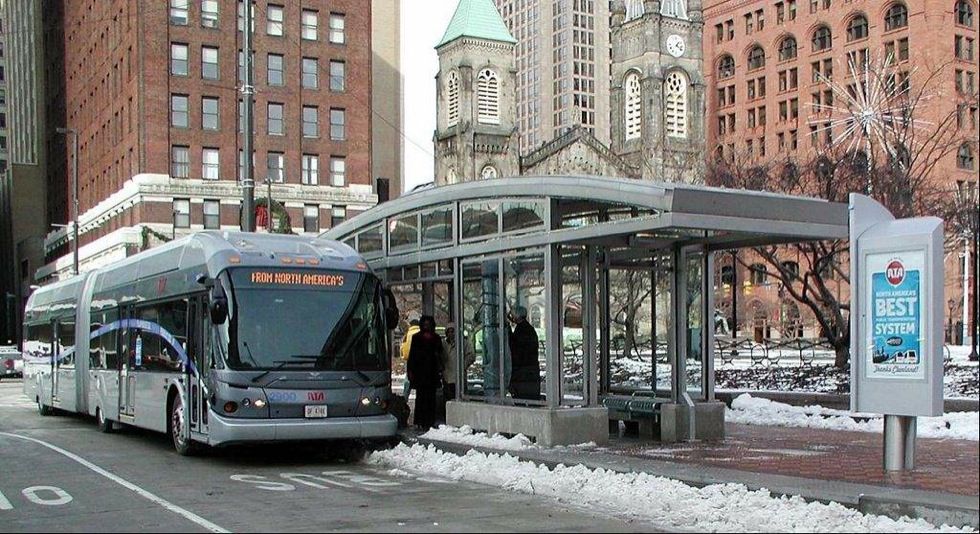Speeding up buses in urban areas and attracting more riders is a difficult task if transit vehicles are constantly stuck in traffic.
Cleveland learned this lesson nearly 10 years ago and it continues to reap the benefits.
In building a corridor that prioritizes bus traffic with dedicated lanes, Cleveland embraced the reality that buses are moving many more people much more efficiently than cars with one or two passengers. That extra street space is extremely valuable in cities like Cleveland and Chicago.
The Euclid Corridor, which connects Cleveland’s two biggest employment centers (downtown Cleveland and University Circle), has always been a center of commerce in the city. In 1993, a task force was set up to find better ways to serve public transit along this busy corridor through the heart of Cleveland.
After a series of consultations with riders, businesses in the area, and a variety of other interests, the City of Cleveland accepted a planned alternative to rail service in the corridor, a true bus rapid transit system, which was completed in 2008.
The HealthLine runs 6.8 miles along Euclid Avenue through the eastern section of the city. There are 36 stations along the route, all of which are equipped with fare card machines. They are sheltered and contain real-time arrival information. Service is at 5 minute intervals during peak times and 7-15 minutes during off-peak times, operating 24/7.
Between downtown and University Circle, all stations have raised platforms for quick and level boarding. The route also uses hybrid-electric buses that have doors on both sides to allow use in both directions within the dedicated bus lanes. The dedicated bus lanes also have a set of protected bike lanes on its outer edges to complement service.
According to the Cleveland Regional Transit Authority, ridership boomed during the first year of operation – a 48 percent increase. Within the first six years of service, 30 million customers used the HealthLine. Annual ridership has increased about 60 percent over the previous conventional bus line, which was the highest ridership bus line in the region before HealthLine service began.
The HealthLine was a $200 million dollar investment that paid off. The Institute for Transportation & Development Policy named it the “Best” Bus Rapid Transit in North America and recognized it as having the best return on investment for a transit project, regardless of mode, in the United States – a staggering $114 return for every transit dollar invested.
Since 2009, the HealthLine has been credited with $6 billion in economic development along the Euclid Corridor: 4,000+ new residential units, 7.9 million square feet in commercial development and 13,000 new jobs.
As Chicago looks for ways to increase bus efficiency, we should look at Cleveland as a successful model in building dedicated lanes to free buses from congestion and help stimulate economic development along the route.
This post was written by Active Trans Advocacy Intern Kyle Ryan. Photo Credit: National Association of City Transportation Officials

